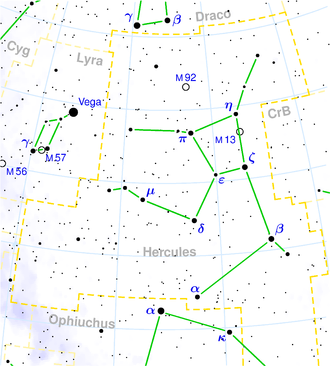NGC 6146
| Galaxy NGC 6146 |
|
|---|---|

|
|
| SDSS recording | |
| AladinLite | |
| Constellation | Hercules |
|
Position equinox : J2000.0 , epoch : J2000.0 |
|
| Right ascension | 16 h 25 m 10.3 s |
| declination | + 40 ° 53 ′ 34 ″ |
| Appearance | |
| Morphological type | E / S0 / PEG |
| Brightness (visual) | 12.5 mag |
| Brightness (B-band) | 13.5 likes |
| Angular expansion | 1.3 ′ × 1.0 ′ |
| Position angle | 75 ° |
| Surface brightness | 12.9 mag / arcmin² |
| Physical data | |
| Affiliation | Abell 2197 |
| Redshift | 0.029420 +/- 0.000053 |
| Radial velocity | 8820 +/- 16 km / s |
|
Stroke distance v rad / H 0 |
(401 ± 28) x 10 6 ly (123.0 ± 8.6) Mpc |
| history | |
| discovery | Wilhelm Herschel |
| Discovery date | March 18, 1787 |
| Catalog names | |
| NGC 6146 • UGC 10379 • PGC 58080 • CGCG 224-018 • MCG + 07-34-24 • GC 4195 • H III 638 • h 1958 • LDCE 1190 NED007 | |
NGC 6146 is a 12.5 mag bright elliptical blazar of the Hubble type E2 in the constellation Hercules and about 401 million light years from the Milky Way.
It was discovered on March 18, 1787 by Wilhelm Herschel with an 18.7-inch reflector telescope, who noted "vF, vS".
